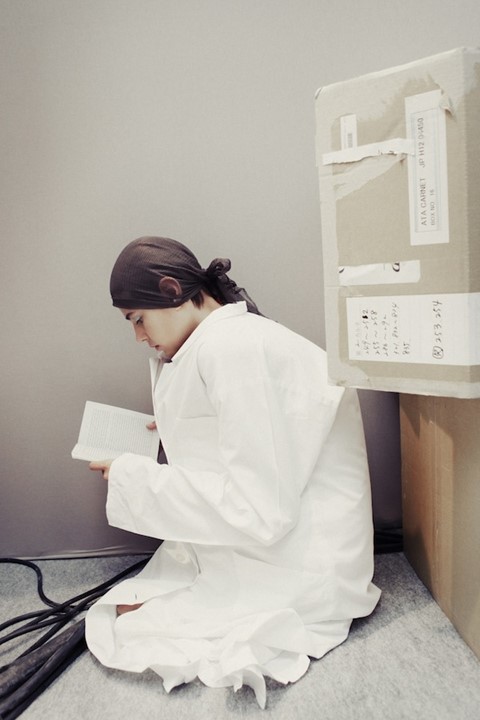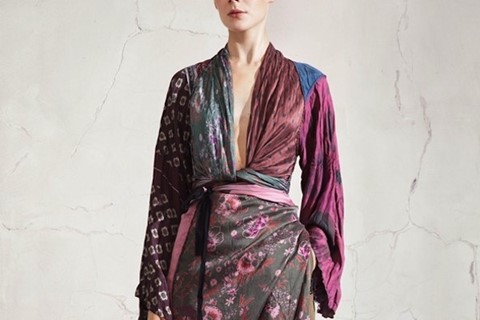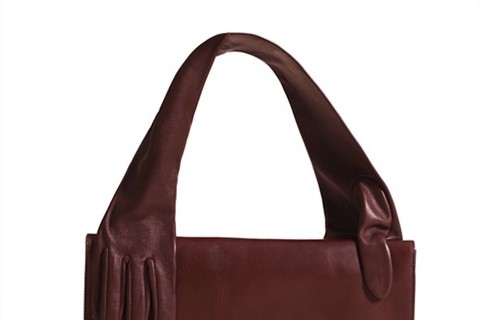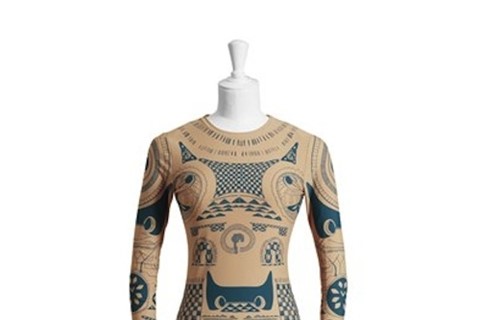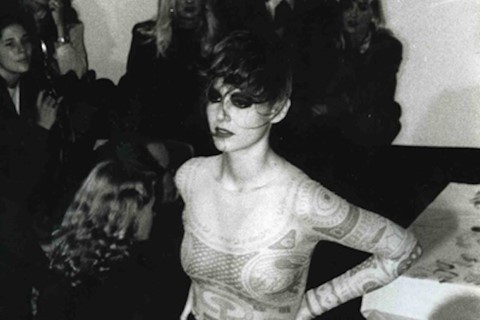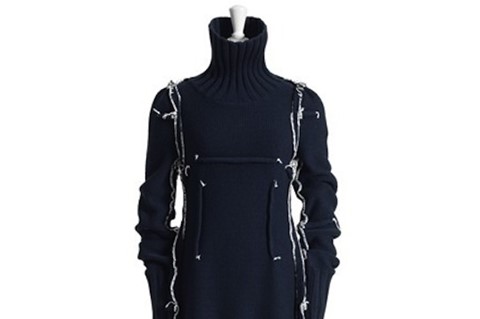In anticipation of the release on 15 November, AnOther presents the ultimate Maison Martin Margiela cheat sheet, explaining the ideas and inspirations behind the H&M collection...
All designers have their own house codes, be it a key item that they revisit every season, distinctive detailing, recurring emblems and motifs or an irrefutable signature approach. Clearly identiable components so strong that one doesn't even have to refer to the label to discover its creator. For this, Maison Martin Margiela is in a class of its own, having established rigorous house codes since its inauguration in 1988. A journey through their archives is comparable to a rewarding lesson at school. It's inspiring (you realise the House often pre-dates most trends) and it's incredibly satisfying tracing the key themes that have emerged over the past two decades.
The House's collaboration with high street retailer H&M launches this month. It's an interesting move – although the Maison is possibly one of least recognised household names, its rich archive and long-established codes mean that it has plenty to offer, just like Rei Kawakubo did with polka dot Ts and dropped-crotch trousers created for her collaboration with the high street retailer.
In anticipation of the UK release on 15 November, AnOther presents the ultimate Maison Martin Margiela cheat sheet, explaining the ideas and inspirations behind the H&M collection.
Colour: White
If there is one colour that defines the house, it is white. Since its creation, the Maison has used it for walls, floors, stands, acessories, wardrobes and garments. The Maison reveals the importance of white: " [it] means the strength of fragility and the fragility of the passage of time. An expression of unity, purity and honesty. It is never just white but more – whites – all the shades possible! We usually use matt white so that the passage of time is evident." The H&M collection includes a women's crisp white shirt, jumper and oversized rollneck and for men, a white T-shirt.
Garment: The White Coat
Inspired by the coats worn by workers in haute couture workshops, the Margiela white coat is an iconic garment, worn by all of its team, including the designers, PRs and shop assistants. Although the H&M collection doesn't include a white coat, it does feature an apron, a garment which has historically protected the undergarments.
Technique: Paint
As well as objects and interiors, the Maison has also become known for applying matt white paint to garments and accessories, even, in S/S92, painting the models' arms. The application is always a little haphazard to evoke the passing of time. In the current issue of AnOther Magazine, stylist Olivier Rizzo appropriated the technique, splashing accessories with white paint. In the H&M collection, there are a number of "painted garments" including jeans for men and women.
"White means the strength of fragility and the fragility of the passage of time. An expression of unity, purity and honesty. It is never just white but more – whites – all the shades possible!"
Technique: Trompe L'oeil
Derived from the art world, this technique has been used frequently by the Maison, not just in collections but in photography, office and store interiors. The trompe l'oeil motif is a metaphor for the Maison's complex relationship with time and history. Trompe l'oeil hands are used a number of times for accessories in the H&M women's collection, and a hand glove bag on a single strap can be traced back to the A/W89 collection.
Colour: Nude
Another colour synonymous with the house, although more specific to the designs. Margiela debuted a nude top featuring a black bra print during its women's S/S07 collection, and a similiar version for H&M nods to the Maison's ability to pull off sexy in a clever way. A nude garment always makes an onlooker think. The H&M collection includes a tattoo top featuring an abstract cat face, inspired by an original tattoo garment from A/W08.
Technique: Deconstruction
Deconstruction is an important word in the Maison's vocabulary. The Maison has always favoured exposing the production process, and often plays upon the iconography of the tailor's atelier. Exposed stitches, lining, seams and darts; garments turn inside out. Two women's jackets in the H&M collection feature exposed seams and a navy rollneck incorprates exposed white stitches.
Technique: Oversized
Clothes that look too big? The Maison loves them. In S/S01 it showed oversized men's clothes for women. A few years earlier, for A/W94, they had shown actual reproductions of pieces for dolls. The H&M collection includes a number of oversized coats and rollnecks for women, and trousers which are fastened to look like the waistbands are too big. The cosy duvet coat is reminscient of a coat from A/W99.
Material: Plastic
As well as nude coloured fabrics, the Maison often uses transparent plastics. Remember the plastic bag carpet coat from S/S12? In S/S90, tops were made from actual carrier bags. The H&M collection utilises perspex heels for shoes.
Technique: Assemblage
The Maison loves to recycle; to reuse; to repurpose, with the most popular technique being patchwork – combining materials such as leather, denim and even broken crockery. The H&M collection includes a floral patchwork top and apron which can be worn together to give the impression of a one-piece. The men's collection includes a watch frame, minus the clock face.
Material: Hair
A nod to surrealism, hair, fur and feathers have always been important to the Maison. A hair necklace appeared in the S/S09 collection and has been revisted for the H&M collection.
Technique: Sparkle
The Margiela woman is one who has fun! Sparkles, sequins and metallics have been prominent through the Maison's history. For A/W89 and S/S90, the models' necklines were decorated with silver glitter. Disco ball earrings debuted in A/W00 followed by an artisanal mirrored top for S/S08. The H&M collection includes striking metallic oversized candy bags (just like the ones for S/S10).
Note: The H&M collection does not include Tabi shoes. The label will be white but will not include the iconic white pick stitches, visible on the outside of the garment.
Text by Laura Bradley
